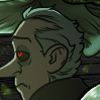Know Thy History: Prince Valiant

There must be something in the waters of Nova Scotia that makes its residents really embrace history. Kate Beaton, one of the most prominent names in webcomics currently, made it big by sticking modern slang in the mouths of respected figureheads of history.
She’s not the only one, though. Once upon a time, a resident of Halifax became a staff artist for the venerable retailer, Hudson’s Bay Company, in Winnipeg, where he drew ads for ladies’ corests. Later, he would move to comic strips. His first job was illustrating the adventures of Edgar Rice Burroughs’ Tarzan. However, being a true artist, what he really wanted to do was work on something that was his own creation.
Newspaper tycoon William Randolph Hearst loved this man’s pitch so much that he offered him ownership of the strip, a rarity for the earlier work-for-hire era in comics. Incidentally, this is the third time Hearst factors into this feature. It’s kinda uplifting to know that one of the world’s biggest media tycoons was deep down inside a huge comic nerd.
That cartoonist went on to pen the adventures of a knight in King Arthur’s Court, someone whose adventures are still featured in newspapers to this day. His name was Hal Foster, and that comic strip is Prince Valiant.
(Incidentally, this piece is going to lack the usual links, mainly because my main reference site for newspaper comics — the I Love Comix Archive — went down because the hosts got spooked by SOPA. Sigh.)

Now, I’ll be honest with you… Prince Valiant is one of those comic strips that I’ve never really dug, despite being aware of it since I was a wee El Santo. I mean, now that I’ve taken a look at a few strips, I’ve become so genuinely intrigued that I immediately sent off for my own Prince Valiant hardcover to lazily breeze through.
Valiant is unique. There is no other strip in the newspaper like it. The drawings were always intricately detailed, there were no frames bordering the panels, and all dialogue and action was conveyed in text. Everyone’s posed like they’re in a Renaissance painting. Still, it’s a hard strip to like, especially when you’re a kid who just wants pages and pages of explosions and fist fights. Valiant looks and feels … stodgy.
So it was a huge surprise when an older co-worker (in his late 40’s) and I got to talking about comics, and he mentioned that his favorite was Prince Valiant. That threw me for a loop, because I didn’t think that there had been any actual Prince Valiant fans since, oh, 1960 perhaps?

Still, looking back at the Prince’s glorious history, it’s pretty apparent why there’s an appeal. First of all, there’s that unconventional use of prose and images. Not everyone’s a natural comic reader. Some people do rather like reading prose. And those people were well serviced by Prince Valiant, which is closer to being pictures with captions. The format does impart a sense of class, doing justice to its Arthurian setting in a way that the traditional frames-and-word-balloons format can’t.
Second, there’s that admittedly stunning art. Foster was a fantastic all-around artist. His strip boasted some great looking architecture, meticulously detailed clothing, and epic clashes. He had a keen eye for adding shadows to heighten drama. Hal Foster is said to have put 50 to 60 hours working on a single strip, and it shows. The results look less like a comic and more like a Gustave Dore woodcut.
Perhaps Foster drew on his own immigrant experience when creating the origins of Prince Valiant. They were, after all, both strangers in a strange, yet still familiar, land. Both got a big career boost from admiring patrons: Foster with Hearst, Valiant with Gawain and, later, King Arthur.
The Prince Valiant comic strip starts off with Val as a little boy from the far off land of Thule (said to be in Scandinavia). His father and mother, the King and Queen, were exiled to the new realm of England … where they are not exactly welcomed with open arms. So the locals exile them to a local swamp. Prince Valiant, though, is a naturally jolly lad, and he makes the best of the situation.
Like, um, fighting dragons. (Google Image Search failed to bring up the original Hal Foster strip of Prince Valiant fighting a dragon, which I’m told looked like a plesiosaur. So have this latter day 2005 image instead, where Prince Valiant fights a couple of plesiosaurs lake dragons.)

Eventually he gets in good with the Knights of the Round Table, becoming friends with Sir Gawain and serving as his squire, where he gets to go on some crazy adventures!
The fantasy elements would eventually be reduced. As the story developed, Foster realized that the character development took such a turn that Prince Valiant deserved a more realistic take. “Realism” being relative.
Much has been written of how Prince Valiant is not historically accurate, cobbling together imagery from different eras. Open Letter Monthly writes:
Since the time of young Val’s earliest adventures is well-established in the strip – when little more than a boy, he journeys to the court of King Arthur intent on becoming a knight of the Round Table – those details of dress, armor, and especially castles (no previous comic strip had seen the like of Foster’s castles) were not, strictly speaking, accurate. The armor should have been composed of Roman cast-offs, and the castles should have been dumpy little affairs behind drab walls, not those soaring Norman confectioner’s pieces that fill the pages of this book. Such anachronisms prompted small avalanches of correcting letters from fans, but Foster took it serenely – he acknowledged from the beginning that his concern would be to give his readers the Arthur’s England they imagined, not necessarily the one that might actually have existed.
But, come on, when has a strictly accurate representation of King Arthur ever been all that compelling. After all, by all accounts, the guy wasn’t real in the first place. The modern version of the legend was popularized by Thomas Malory’s La Morte D’Arthur and Alfred Lord Tennyson, and those dudes traded on the medieval images like crazy. If you get too serious, you get that Kiera Knightly King Arthur movie. So, OK, maybe some people liked it … but to me, the story of the familiar High Middle Ages visuals robs the story of the charm. Give me the Camelot of Prince Valiant, Excalibur, and Sword In The Stone any day.

Besides, the loose interpretation of history allowed for some interesting adventures. Valiant would meet and marry Aleta, Queen of the Misty Isles. After the marriage, she would get kidnapped by a Viking raider. Valiant pursued them halfway around the world, finally arriving at Niagara Fall for the climax … arriving in America about 1000 years before Columbus. Valiant and Aleta reunited, and they spent some time there hobnobbing with the local Indians. America would also be where Valiant’s first son, Arn, would be born.
That’s Xena: Warrior Princess levels of crazy, yo.
Still, through it all, Prince Valiant is a world of swashbuckling and derring-do. Good men battle evil. Flagons of ale are raised. Valiant remained ever true to his name. And, for some reason, he and his wife never visually aged despite technically being grandparents now. It has, for generations, served as a visual starting point for what many imagine fantasy stories to look like.
Prince Valiant is also the source of several enduring elements of pop culture. One would be Flamberge, a.k.a. The Singing Sword. The sword would eventually make its way to several animated parodies, first appearing in a couple of Bugs Bunny cartoons (one cheekily entitled “Prince Violent”) and eventually in a rather memorable scene from Who Framed Roger Rabbit?

The most famous aspect of Prince Valiant, though, is definitely that terrible, much-mocked haircut of his. It’s officially called a “pageboy,” but I’ve always like the “Prince Valiant” better. I mean, when you say “Prince Valiant” you know exactly what it is.
Of course, once styling that haircut was none other than movie star Robert Wagner, who played Prince Valiant in the 1950’s movie.
I’ve heard the movie wasn’t that great.
Perhaps.
But you can’t argue that Wagner didn’t get the otherworldly dorkiness of that haircut down.
Posted on January 25, 2012, in comics, Know Thy History, The Webcomic Overlook. Bookmark the permalink. 13 Comments.












































































































It’s odd – I think I had the same negative reaction to Prince Valiant too whenI was younger. The standard for my Sunday paper experience was Spiderman and not the older stuff retained for nostalgia that at times had a more episodic/serial element to its storytelling (i.e., Dick Tracy, Brenda Starr) .
That said, the art is pretty amazing. Do we have any real modern equivalents at this point working this kind of schedule and high level of artwork?
On another note — this almost seems like it would be really fun to resurrect as a sci-fi series or tv serial. I guess should John Carter do well, Hollywood might be amenable to mining some of these old classics…
Would it also surprise you if I were to tell you that Prince Valiant is immensely beloved in Europe, and a key influence on the Franco-Belgian style? In fact, Flemish comic-giant Willy Vandersteen is said to have shamelessly traced panels from Prince Valiant for his own comics. The influence can also be seen in comics like Storm, which closely follows the standards set by Prince Valiant. Indeed, the amount of time and care Foster put into the pages of Prince Valiant are similar to what you generally see from modern European artists.
And every time I’ve walked into my local comic book store, there’s always been an issue of Prince Valiant displayed on one shelf or another.
“But, come on, when has a strictly accurate representation of King Arthur ever been all that compelling.”
Bernard Cornwell’s The Winter King/Enemy of God & Excaliber trilogy. For given values of “accurate”. Not that your points on Prince Valiant being both gorgeous and occasionally crazy awesome don’t hold true…
I grew up looking at Prince Valiant, and like you said, it just doesn’t appeal to children. I got reintroduced to it last summer and I absolutely fell in love, and I only read a couple of years worth. It has a really great story and obviously, amazing art. Hal Foster was truly a master of his craft.
If the site went down, try putting it in http://web.archive.org and see if there are archives available
FYI the ilovecomix archive is still up and running. please feel free to mention us all you like in the future. http://www.ilovecomixarchive.com is the web address.
Yup, I still go there. 🙂 I didn’t know if it was appropriate to mention you guys, though, since there was that digital rights issue from a year back. I didn’t want to get you guys in trouble again or anything.
Last spring Summit Entertainment requested viewers to avoid
viewing or clicking on hot photos having disclosed on the
Internet, especially scenes of Bella and Edward in bed.
That being said let’s take a look at the types of prevalent programs that can cause harm to your computer:.
It could have been used by a third party to login to your e-mails and change or reset passwords.
I was the same way as the rest f you. Up until I was about twelve, every Sunday, my dad would make sure to read the newspaper first before my siblings and I tore it apart over the Sunday comics. It wasn’t until I was about 12 years old that I started reading Prince Valiant, and I’ve been reading it ever since.
I was so intrigued by Prince Valiant that I saved the comic strip for last as I read our Sunday, Detroit Times newspaper. My Favorite story was the one describing its own version of creation.
Anyone remember turning to the Detroit radio station to hear the guy read the Sunday comics along with you? Yes, I’m really dating myself.
I always read the Prince Valiant comic strip every chance I get. Now with the TV series Game of Thrones and The Vikings on PBS Channel. I believe this has interacted with the new generation of readers.
I’m currently reading Vol.9 of Fantagraphics superb “remastered” Prince Valiant collection. I always sought out and read Valiant fist when I got the comics section in the newspaper. I believe even before Spider-Man! The art style drew me in and I’ve always had a fondness for fantasy/medieval adventure. I’m 39, so I lost touch with Valiant sometime in the mid to late 80’s, but it left an indelible impression in terms of what great comic art and storytelling could be. I’m now a die-hard Hal Foster fan and reading it as an adult, I’ve been impressed with how well the strip was written. We all know how gorgeous the art is, but the writing is vastly underrated. Sure, it’s “classical” and wholesome, but it’s also smart and often funny.
Pingback: Comics A.M. | Angoulême begins; judges come to cartoonist’s rescue | My Blog